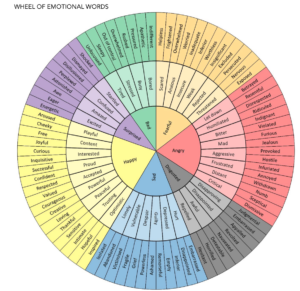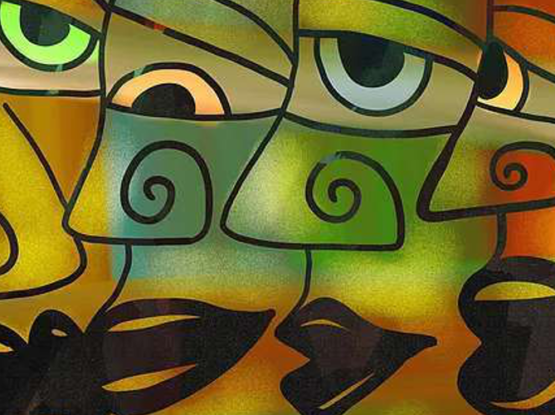Have you ever felt something really strongly, but been unable to put it into words? Feeling a bit meh? Or just upset? Being able to articulate your feelings can be empowering and validating, but it’s not always easy. That’s where a Wheel of Emotion can help, offering vocabulary around our most common feelings and their different permutations.
Why is naming emotions important?
Emotions play an important role in our lives, affecting how we think, behave and relate to others. They help us communicate with ourselves and others, keep us away from harm, and guide our decisions. If we’re telling our loved ones we’re “upset”, it may be hard for them to know how to respond. Whereas saying we feel fragile might be more accurate and allow them to respond in a more useful way. And it’s not just for the sake of communicating with others, identifying our emotions also strengthens our own emotional intelligence.
But emotions can get complicated. Sometimes, they might confuse us to the point where ignoring them seems like the best way to avoid getting overwhelmed. But ignoring emotions is rarely a good option in the long run. Exploring our emotions with curiosity and accepting how we feel is a better recipe for avoiding becoming overwhelmed. Actually, simply naming your negative emotions is a scientifically-proven way to defuse strong emotions like anxiety. Being able to clearly identify how we are feeling has been shown to reduce the intensity of an experience because it re-engages our rational mind.
What is The Wheel of Emotions?
There are a few wheel-of-emotions models out there. The one I like to use consists of a couple of layers; an inner circle with seven primary feelings: happy, sad, disgusted, angry, fearful, bad and surprised, and two outer circles with more descriptive words that help us to name our feelings more accurately. It is heavily focussed on negative emotions/experiences, as it’s these that we often find the hardest to express.

The wheel helps you to identify and describe what you are currently feeling, and to ‘drill down’ further to get the nuance and intensity right. Start by selecting the emotion in the middle that best fits how you are feeling, then work your way out. Challenge yourself to see if you can swap “meh” for something just a little bit more precise. And use it to help guide discussions with others; be it work mates, family or older kids who may also be feeling a bit meh.
Download the wheel of emotion here, stick it on the fridge and start exploring.
By Jane Macnaught
Subscribe For More
 Jane Macnaught
Jane Macnaught
E: counsellor@tranquilloplace.com M: +61 425 152 490
Learn More About Jane
Tranquillo Place: Counselling | Mediation | Relationships
Offering private services in our beautiful tranquil room in Mona Vale, Northern Beaches Sydney and online using secure, encrypted Zoom.
Specialists in trauma, anxiety, grief & loss, communication, intimate relationships, compassionate mediation, couples coaching, online courses & training, workshops, and trauma informed practitioner support group.
Talk to us. We would like to hear what’s happening in your life and help you find the right support.
Book a Free Session



